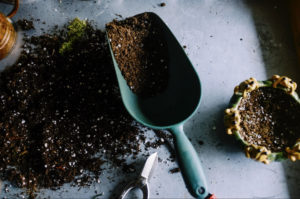AVOIDING INJURY WHILE GARDENING
“An ounce of prevention is worth a pound of cure.” – Benjamin Franklin
March 12th is recognized as ‘National Plant a Flower Day’. Gardeners in Colorado know that it’s an unofficial rule not to plant anything until after Mother’s Day for fear of freezing temperatures, but with the promise of Spring around the corner it’s a good time to get in gear for the gardening season and also prepare for an unfortunate side effect that might come with it: back pain. Hunching over a flower bed, lifting heavy bags of soil, and repetitive movements are all things that can aggravate our bodies. If we’re not careful, a day out in the garden can spell disaster. We’ve compiled a few tips to keep you enjoying this hobby all season long.
-
Warm Up!
Gardening can be a very strenuous activity, so it’s important to do some light stretching before asking anything of all our muscles. Feel free to get some stretching in during and after, too.
-
Take Breaks
This might seem obvious, but every task is easier when broken down into smaller portions. You might feel tempted to push through to finish raking that corner or pull those last weeds, but remember to listen to your body – does it need water? Is it cramping up? Don’t overdo it!
-
Use the Right Tools
Sometimes it’s worth it to splurge on the ergonomic version, or on items that will offer some extra support. Long-handled implements allow you to remain standing while gardening, letting you avoid hunching over for long periods of time. If a task does require you to be closer to the ground, try investing in a garden stool, reinforced knee pads, or a well-cushioned kneeling mat to avoid extra strain on those joints.
-
Utilize Proper Form
You’ve probably heard the age-old advice of lifting with your knees, but it always bears repeating. If lifting something heavy, keep your stance wide and squat at the knees rather than bending over at the waist. Keep the object close to your core (use both hands) and lift with your legs. Wheelbarrows can come in handy if those heavy items need to be transported a far distance. If kneeling, try using only one knee at a time or supporting yourself with your non-dominant hand, and switching knees as needed; avoid arching your back too much, and switch positions frequently.


